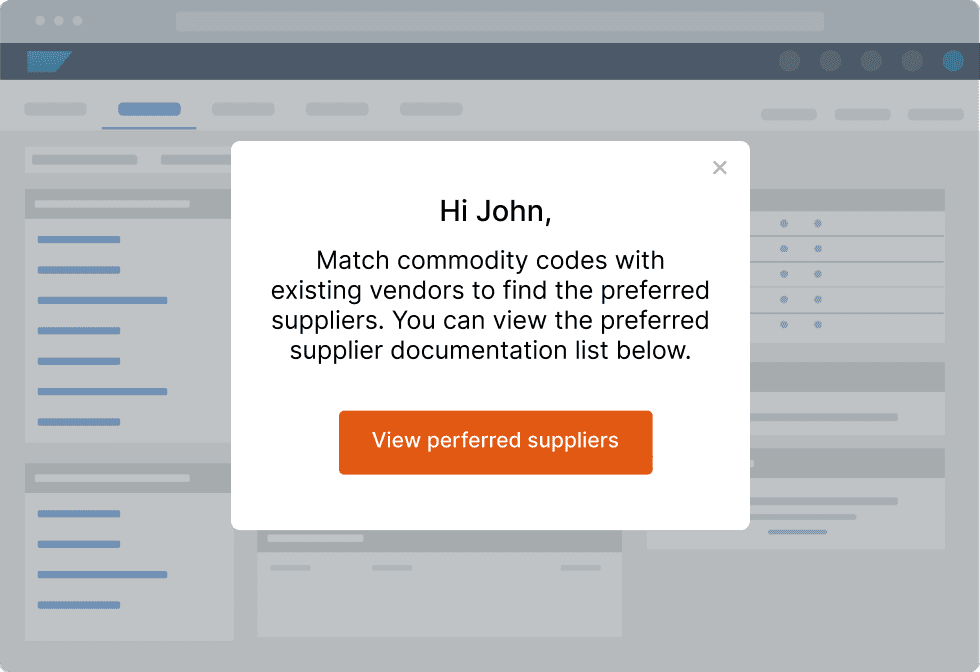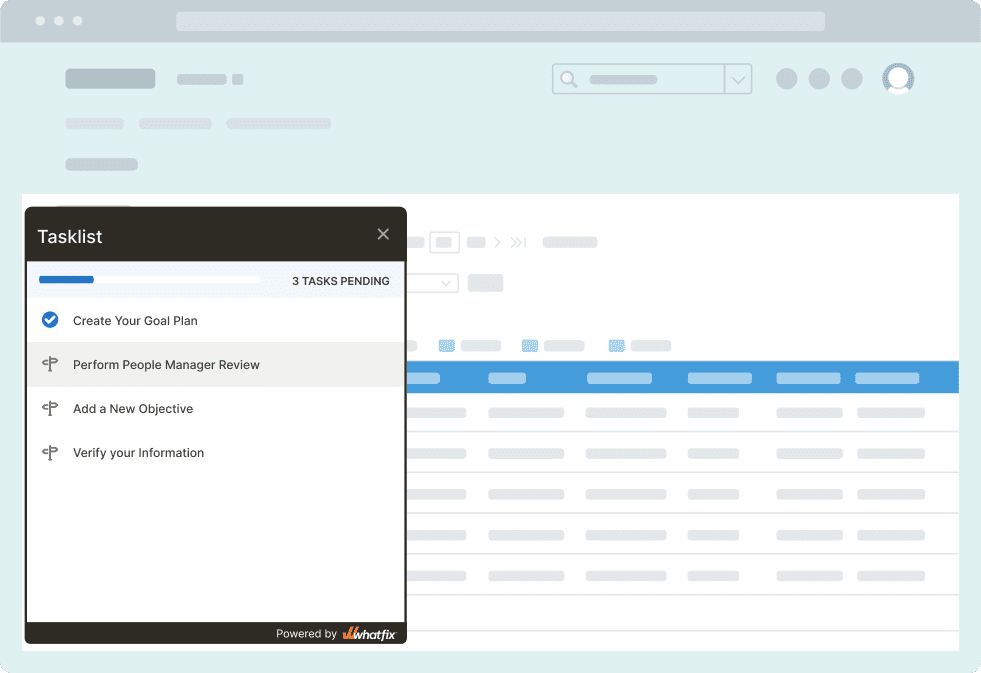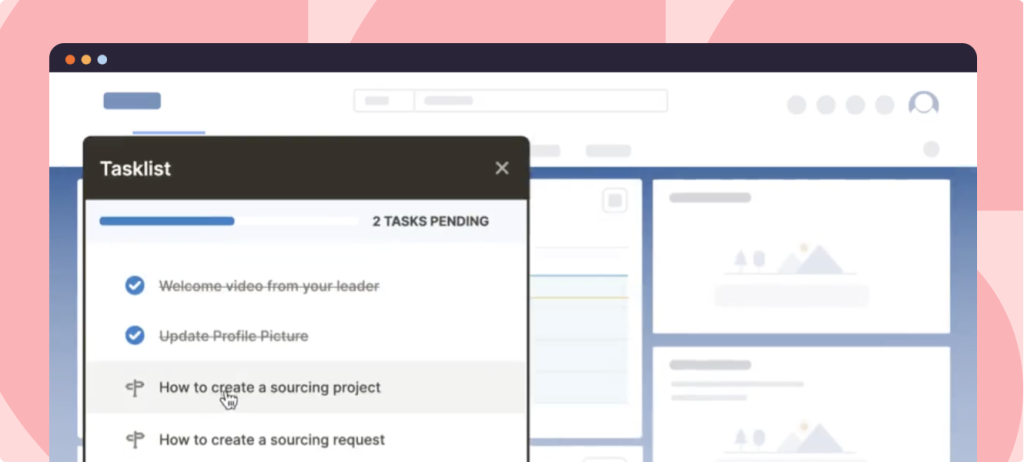Imagine your organization as a ship navigating today’s business environment’s vast, unpredictable seas. The waves of digital transformation and market shifts are relentless, simultaneously pushing you in multiple directions. To steer successfully, you need more than just a capable crew—you need a well-coordinated team of change leaders who can anticipate the tides, adjust the sails, and keep everyone on board moving forward.
What are the critical change management roles?
- Change sponsor
- Change manager
- Change agents
- Business stakeholders
- People managers
- Project managers
- Impacted employees
Change management is not just about managing the process; it is about ensuring every part of your organization is aligned and ready to embrace new horizons. As your company embarks on transformative initiatives—whether through digital transformation, structural reorganization, or cultural shifts—understanding the key roles that drive these changes becomes crucial.
In this article, we’ll explore the seven essential roles in change management, uncovering the responsibilities that enable smooth transitions and long-term success. Whether navigating new technology implementations or reimagining business processes, these roles will anchor your efforts, ensuring that change is managed and mastered and leads to sustained organizational success.

Key Change Management Roles and Their Responsibilities
Effective change management requires a coordinated effort from multiple roles within an organization. Each role is pivotal in ensuring the change process is smooth, efficient, and effective. Below, we explore the critical change management roles and their responsibilities, which are essential for driving successful transformations.
1. Change Sponsor
The change sponsor is typically a senior leader or executive who champions the initiative. As the visible face of the change, they provide direction, resources, and unwavering support to ensure the initiative aligns with the organization’s vision and delivers measurable value.
Several key responsibilities include:
- Advocating for Change: Actively champion the change across all levels of the organization, ensuring a clear understanding of its strategic importance and the long-term benefits it will bring. This involves engaging with other senior leaders and stakeholders to build a unified vision for the change.
- Securing Resources: Strategically allocate and manage financial, human, and technological resources to fully support the change initiative. This includes making critical decisions on budget allocation, personnel assignments, and technological investments to maximize the initiative’s success.
- Providing Strategic Direction: Ensure the change aligns with the organization’s broader vision and long-term objectives. The sponsor must continuously evaluate the initiative’s impact on the company’s growth and innovation strategy and make adjustments to maintain alignment.
- Monitoring Progress: Implement a robust framework for regularly reviewing the progress of the change initiative. This includes setting up change management KPIs, conducting regular reviews, and ensuring that any barriers are promptly addressed to keep the initiative on track.
The role of the change sponsor is crucial in championing the change at the highest levels, ensuring that the initiative is well-supported and strategically aligned with the organization’s long-term objectives.
2. Change Manager
The change manager is responsible for meticulous planning, execution, and oversight of the change management process. This role is vital in ensuring that changes are implemented smoothly, with minimal disruption to business operations, while maximizing end-user adoption and utilization.
Several key responsibilities include:
- Planning and Coordination: Develop and manage a comprehensive change management plan that outlines the timeline, resources, and key milestones. The change manager must ensure all stakeholders are aligned and informed throughout the process.
- Risk Management: Identify potential risks associated with the change and develop mitigation strategies to minimize disruptions. This includes anticipating resistance to change, proactively addressing concerns before they escalate, and ensuring business continuity throughout the transition.
- Communication Strategy: Design and implement a change communication strategy that clearly informs all relevant parties about the change process, its benefits, and expected outcomes.
- Training and Support: Oversee the development and delivery of training programs that equip employees with the necessary skills and knowledge to adapt to the changes. Providing ongoing support and resources ensures that any challenges are swiftly addressed, enabling a smoother transition.
The change manager is pivotal in guiding the change process from planning to execution, ensuring that all initiative aspects are managed effectively. By developing a comprehensive plan, coordinating stakeholders, managing risks, and facilitating communication and training, the change manager ensures that the initiative is executed smoothly and achieves its intended goals.
3. Change Agent
Change agents are individuals within the organization tasked with supporting the change initiative at a grassroots level. They bridge the change management team and the broader organization, ensuring the change is embraced and implemented effectively.
Several key responsibilities include:
- Championing the Change: Act as advocates for the change within their respective teams or departments, helping to build enthusiasm and support among colleagues. Their influence is crucial in driving widespread acceptance.
- Providing Feedback: Gather and relay real-time feedback to the change management team, offering valuable insights into how the change is being received and identifying any areas of concern that need to be addressed or where employees need additional support.
- Supporting Colleagues: Provide hands-on training and support to colleagues during the transition, helping them navigate new processes, tools, or systems. This peer support can significantly reduce anxiety and improve the overall adoption rate.
- Identifying Roadblocks: Identify potential obstacles within their influence and work collaboratively with the change management team to develop solutions. This proactive approach helps ensure that potential challenges are swiftly addressed before they escalate, maintaining the momentum of the change process.
Change agents are critical in ensuring that the change initiative is embraced at all levels of the organization. By facilitating communication, providing support, driving engagement, and monitoring adoption, they help ensure that employees are fully onboard with the implemented changes, contributing to the initiative’s overall success.
4. Business Stakeholders
Business stakeholders are individuals or groups directly impacted by the change. Their involvement ensures the change initiative aligns with business needs and delivers tangible value.
Their key responsibilities include:
- Contributing Expertise: Provide deep insights and expertise from their specific business area, ensuring that the change initiative meets the organization’s needs and is tailored to deliver maximum value.
- Participating in Decision-Making: Actively engage in decision-making processes related to the change, ensuring their perspectives are considered and the change aligns with business objectives. This involvement helps maintain alignment between the change initiative and the organization’s strategic goals.
- Communicating Requirements: Clearly articulate the needs and concerns of the business area, making sure these are addressed in the change management plan. This ensures the change is relevant and beneficial to the organization’s operations.
- Supporting Implementation: Assist in the practical implementation of the change within their business area, ensuring a smooth transition and that any issues are resolved quickly.
Business stakeholders are essential in aligning the change initiative with the organization’s requirements. By contributing expertise, participating in decision-making, communicating needs, and supporting implementation, they help ensure the change delivers the intended value and improves the organization’s operations.
5. People Managers
People managers guide their teams through the change process, ensuring employees are supported, motivated, and engaged throughout the transition.
Their key responsibilities include:
- Communicating Change: Managers must clearly explain the change to their teams, ensuring employees understand its reasons and how it will impact their work. This communication is vital for building trust and minimizing resistance.
- Providing Support: Offer ongoing support and guidance to employees as they navigate the change, addressing concerns and helping them adapt to new processes. This support helps maintain morale and ensures employees feel confident in succeeding in a new environment.
- Managing Resistance: Proactively identify and address any resistance within their teams, working to build trust and encourage a positive attitude towards change. By understanding the root causes of resistance, managers can implement strategies to overcome it effectively.
- Monitoring Performance: Track team performance throughout the change process, ensuring that issues are addressed promptly and employees remain productive and engaged. This monitoring helps maintain momentum and ensures that teams meet their objectives.
People managers are crucial in ensuring the change is implemented successfully at the team level. Communicating change, supporting, managing resistance, and monitoring performance help ensure their teams remain motivated and aligned with the organization’s goals.
6. Project Managers
Project managers oversee the planning, execution, and completion of the change initiative. They are responsible for ensuring the project is delivered on time, within budget, and to the required quality standards.
Several key responsibilities include:
- Planning and Coordination: Develop a detailed project plan that outlines the tasks, timelines, and resources required to achieve the change objectives. This plan serves as the overarching initiative’s roadmap, ensuring all activities are aligned and progress is tracked.
- Resource Management: Ensure that the necessary financial, human, and technological resources are allocated and managed effectively throughout the project. This involves balancing competing demands and ensuring resources are used efficiently to meet project goals.
- Risk Management: Identify potential risks to the project and develop strategies to mitigate them, ensuring that the change initiative stays on track. This proactive approach helps prevent delays and cost overruns.
- Reporting Progress: Regularly report on the project’s progress to stakeholders, ensuring that they are kept informed and that any issues are addressed promptly. Transparent reporting helps maintain stakeholder confidence and allows for timely interventions when required.
Project managers are critical in ensuring the change initiative is delivered successfully. Planning and coordinating the project, managing resources, mitigating risks, and reporting progress help ensure the change is implemented smoothly and achieves its intended outcomes.
7. Impacted Employees
Impacted employees are those directly affected by the change initiative. Their role is to engage with the change process, adapt to new ways of working, and provide feedback to help refine and improve the initiative.
Their key responsibilities include:
- Adapting to Change: Actively engage with the change process, learning new skills and adapting to new processes as required. This proactive approach is essential for ensuring a smooth transition and maintaining productivity.
- Providing Feedback: Offer change feedback on the initiative, sharing any concerns or suggestions for improvement with change agents and managers. This feedback is invaluable for fine-tuning the change process and addressing issues before they escalate.
- Participating in Training: Participate in any training or development programs offered to support the change, ensuring they are fully prepared for new ways of working. This participation helps build confidence and competence in the new environment.
- Embracing New Practices: Adopt new practices and ways of working, helping to embed the change within the organization and contribute to its success. By fully embracing the change, employees play a key role in ensuring its sustainability.
Impacted employees play a vital role in the success of the change initiative. By adapting to change, providing feedback, participating in training, and embracing new practices, they help ensure that the change is implemented effectively and delivers the intended benefits.
Additional Roles to Execute Your Change Management Plan
In addition to the core roles in change management, several other roles are crucial for executing a comprehensive and effective change management plan. They include:
- Internal Communication Specialists: Craft and deliver clear, consistent messages about the change initiative, ensuring all employees are informed and engaged throughout the change, helping to minimize uncertainty and resistance.
- End-User Training Professionals: Design and deliver end-user training programs that equip employees with the skills and knowledge to adapt to new systems and processes, essential for reducing the learning curve and increasing user adoption.
- Business Analysts: Bridge the gap between technical teams and business stakeholders by assessing the impact of the change on business processes, ensuring the initiative aligns with the organizational goals and delivers measurable value.
- Help Desk Support: Help desk teams are critical in providing frontline support during the transition. They assist employees in resolving issues quickly, reducing downtime, and maintaining productivity throughout the change process.
- Change Agent Networks: Advocate for and facilitate change across different levels and departments by creating a culture of change within the organization, ensuring the initiative is embraced at all levels.
- Solution Developers: Create and customize the technical solutions that drive the change initiative, ensuring that new systems and tools are tailored to meet the organization’s specific requirements, contributing to the success of the change.
These additional roles are instrumental in executing a successful change management plan. By leveraging the expertise of internal communication specialists, training professionals, business analysts, and other key players, organizations can ensure that every aspect of the change initiative is thoroughly supported and aligned with broader business objectives. These roles help create a well-rounded approach that drives effective change across the organization.
Download our free Change Management templates to get a kickstart on effective change management for your organization!
Drive Effective Change Management with Whatfix In-App Guidance and Support
While well-defined roles are essential in driving change, the right tools are equally critical in enabling these roles to execute their responsibilities effectively. A digital adoption platform (DAP) like Whafix DAP enables end-users with in-app guidance and support capabilities, providing a powerful way to enhance your change management strategy and ensuring employees can adapt quickly and successfully to new processes, systems and workflows, driving effective change through capabilities such as:
1. Enhance user adoption with interactive flows
Change managers are tasked with ensuring employees effectively adopt new tools and processes. Whatfix’s interactive walkthroughs provide step-by-step instructions that guide users through complex tasks within the application, making it easier for users to learn by doing.

This hands-on approach reduces the learning curve and builds confidence, allowing change managers to ensure that support is available precisely when required. By embedding guidance directly within the application, Whatfix increases adoption rates and ensures smoother transitions.
2. Real-time feedback for immediate action
Real-time feedback is vital for change agents to understand how employees interact with new systems. Whatfix captures immediate insights into user behavior, enabling change agents to quickly identify where users are struggling or which features are underutilized. This information allows for rapid adjustments to the change management plan, ensuring that the transition remains on track and that employees feel supported throughout the process.

3. Contextual support with smart tips
People managers must often provide immediate, contextual support as employees encounter new features and tasks. Whatfix’s Smart Tips offer just-in-time assistance, delivering in-app guidance precisely when users need it without interrupting their workflow. Customizable tips empower people managers to address challenges directly within the app, helping employees build confidence and capability as they transition to new systems.

4. Streamline onboarding with task lists
Onboarding is a critical responsibility for both project managers and L&D professionals. Whatfix’s Task Lists enable application owners to break down complex onboarding processes into manageable steps, assisting users in tracking their progress and ensuring no critical tasks are overlooked. By simplifying the onboarding process, Whatfix accelerates employees’ time-to-competency, reducing the likelihood of errors and ensuring the change is implemented smoothly.

5. Facilitate communication with beacons and surveys
Effective communication is a cornerstone of successful change management and is essential for everyone, including change sponsors and internal communication specialists. Whatfix’s Beacons, Pop-Ups, and in-app surveys facilitate this by highlighting new features, updates, and important information. These tools allow change sponsors to maintain clear and consistent communication, while surveys provide valuable feedback on how the change is being received, enabling proactive adjustments as needed.
6. Increase user engagement with pop-ups and overlays
Keeping users engaged throughout the change process is vital for maintaining momentum and ensuring adoption. Whatfix’s pop-ups and overlays deliver critical announcements and contextual information directly within the application, allowing users to remain informed and engaged. By supporting ongoing communication, these tools help change agents and business stakeholders drive higher engagement and successful adoption of new practices.
7. Continuous improvement through analytics
Understanding the impact of change initiatives is crucial for sustained success. Whatfix Analytics provides change sponsors and project managers with detailed insights into key metrics such as feature adoption, task completion rates, and user feedback. This data-driven approach enables continuous refinement of change management strategies, ensuring that efforts remain aligned with organizational goals and deliver the desired outcomes.

Integrating Whatfix’s in-app guidance and support into your change management strategy can empower your change leaders, enhance user adoption, and ensure a more effective and efficient transition. By empowering each role with tailored guidance and support, Whatfix’s tools drive the success of your change initiatives and position your organization for sustained growth and innovation in an ever-evolving business landscape.
Change Clicks Better With Whatfix
Guiding an organization through change requires more than well-defined roles; it demands a strategic approach that ensures every team member is aligned and equipped to contribute to the transformation. The seven key roles discussed in this article are essential for driving change initiatives that meet immediate goals and lay the groundwork for long-term success. Each role plays a vital part in shaping the direction, execution, and adoption of change, ensuring the organization moves forward cohesively.
Yet, understanding these roles is just the beginning. To truly master change management, organizations must empower their teams with the right tools. Whatfix’s in-app guidance and support solutions complement these roles by providing the necessary resources to streamline processes, enhance communication, and foster employee engagement. Integrating these tools into your change management strategy ensures that your organization is prepared for change and positioned to excel.
Effective change management is about more than overcoming challenges—it is about creating a resilient, adaptable organization that can thrive in any environment. By leveraging your team’s strengths and Whatfix’s capabilities, you can transform change from a daunting challenge into a powerful opportunity for growth and innovation.
To learn more about Whatfix, schedule a free demo with us today!







